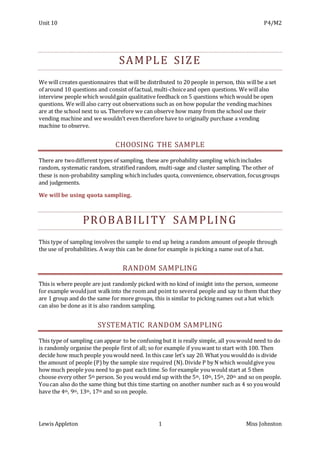1. The document describes various sampling methods that could be used for research, including probability sampling methods like random sampling and stratified random sampling, as well as non-probability methods like quota sampling.
2. It discusses using a questionnaire to collect quantitative data and interviews to collect qualitative feedback from students on installing a vending machine.
3. Observations of a neighboring school's vending machine are also proposed to understand usage patterns without incurring costs.





